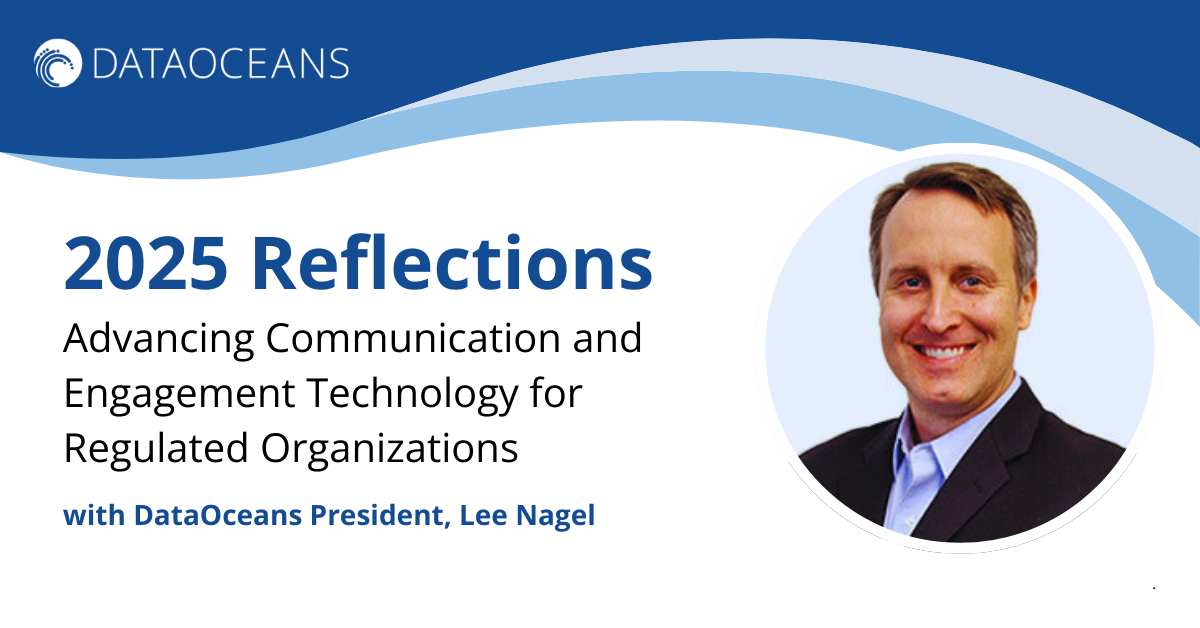Two Gaps Impact Banking Communications
A classic article by Tony Byrne, founder of Real Story Group, that was published in Document Strategy magazine highlights two important gaps that face organizations when they try to digitally transform. He labels these the Hyperbole gap and the Capacity gap. These gaps will be very familiar to banking and financial services organizations, especially as they struggle to upgrade their customer communications. Together, these gaps severely limit the ability of an organization to successfully implement new technologies.
The Hyperbole gap is a chasm, really, that exists between the capabilities that vendors say their software can provide and what that software can actually do. It takes an inveterate optimist to sell software solutions. So not surprisingly, the sales teams for these vendors often overestimate the software’s functionality and, as Byrne points out, “tend to exaggerate the ease of use and return on investment of their systems.”
By comparison, the Capacity gap is an in-house issue. It’s the difference between the functionality a solution provides versus an enterprise’s ability to use it to its full potential. Organizations often select from a big-name vendor when buying software. But this can be a mistake. Besides high costs, solutions from large software companies tend to be overkill for smaller organizations, loaded with functionality that organizations don’t have the skills to ever use. So it’s important to be aware of capacity gaps before purchasing any technology.
This requires an inward look to make a realistic assessment of a bank’s actual capabilities. For banking communications, the news is not good. Capacity gaps in customer communications can be caused by legacy systems that don’t allow for real time updates, or data sources that are inaccessible to the applications that need them, or slow online transaction times that result in customer abandonment before a transaction is completed. In fact, a 2017 BCG survey found that 86% of banking executives felt their bank’s complex infrastructure prevented them from digitally engaging with customers.
Another important aspect of the capacity gap is the gap in the skillsets of employees. It’s not enough to purchase new technologies if staff doesn’t have the knowledge or experience to use them. In fact, in a recent study by Hubspot, 36% of the organizations surveyed rated lack of staff and/or correct skills sets an obstacle to achieving success with digital business initiatives, actually slightly above the need to replace their legacy systems (34%).
The Importance of Buying Outcomes, Not Promises
How can banks avoid the Hyperbole and Capacity gaps when it comes to digitally transforming their customer communications? Both require having a realistic, even gimlet-eyed viewpoint when looking at software solutions. Byrne suggests that, to avoid hyperbole, organizations avoid big name vendors and instead pursue best of breed solutions from smaller providers.
Organizations in search of solutions can rely on recommendations from partners and discussions with a vendor’s existing customers with a company size similar to their own.
Online review sites are another resource. Reviews can reveal red flags that indicate the software is not optimal; for instance, that there are difficulties integrating the product or a steep learning curve. Bear in mind that many large software solutions have spawned entire ecosystems of consultants who charge by the hour to resolve the problems that result from these gaps.
Ultimately, organizations need to stay focused on the outcome communications solutions deliver to the customers. That means ignoring the bells and whistles from salespeople and understanding the current knowledge and the skills of their employees. This is unique to every organization, so a solution that works for one bank won’t necessarily be appropriate for another. But without addressing these gaps, digital transformation will always remain a goal, never an outcome.
DataOceans’ customer communications management platform enables banks, credit unions and other financial organizations to unlock data from their legacy systems to deliver personalized communications that improve revenue and reduce customer attrition. Learn more.



.png)
.png)